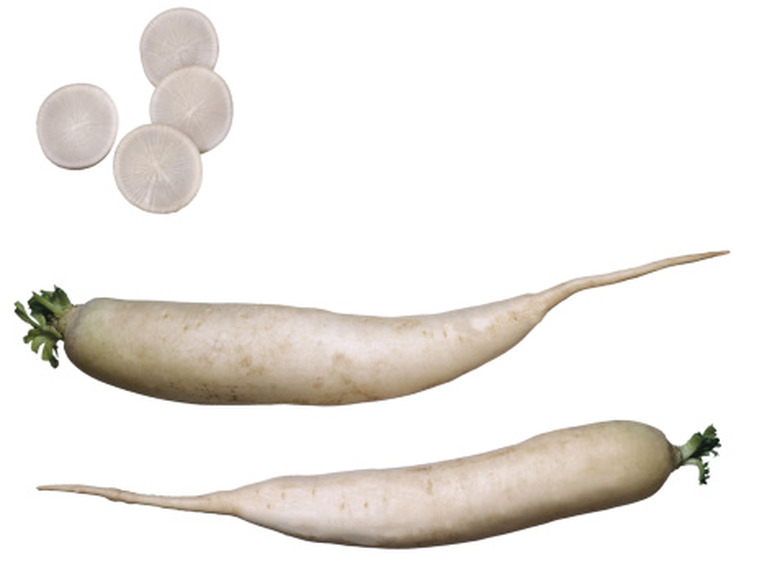When To Pick Daikon Radishes
Daikon radishes have long, fleshy taproots that are used for a variety of purposes. Daikon radishes are generally 2 to 4 inches in diameter and 6 to 20 inches long. The three distinct shapes are spherical, oblong and cylindrical. The uses for Daikon radishes are as varied as the shapes, colors and sizes they come in.
Origins of Daikon Radishes
Also called oilseed radish, Daikon radishes (Raphanus sativus var. oleiferus) comes from two Japanese words: "dia" (meaning large) and "kon" (meaning root). Thought to have originated in the Mediterranian, Daikon radishes were brought to China around 500 B.C. and are still a staple in food dishes across Asia. Most Daikon radishes are white, but they can be yellow, green or black.
Uses for Cover Cropping
Daikon radishes are grown worldwide for cover cropping and food production. Cover cropping is using the natural properties of one or more plant species to help soil, reduce weeds and increase nutrient content for the benefit of the primary crop. Daikon radishes have been found to penetrate tough soils, absorb large amounts of nitrogen and provide a large above-ground foliage cover to suppress weeds. Daikon radishes germinate quickly, grow in cooler temperatures and are often planted in the fall. Left in the ground over winter to decompose, they then release the nitrogen back into the soil for next season's crop.
Culinary Uses
Daikon radishes are the most widely grown vegetable in Japan. Daikon can be eaten raw, fried, grilled or boiled. When eaten raw, Daikon radishes are spicy. They become mild when processed. Daikon radishes are a good source of vitamin C, phosphorus and potassium. Daikon radishes are also low in calories (only about 18 calories per 100g) and are rich in enzymes to help aid in digestion.
When to Harvest
When used as a food crop, Daikon radishes can be harvested approximately 60 days after planting. If used for processing, roots should be allowed to grow to 12 to 14 inches. For fresh market sales, harvest roots at 2 1/2 inches. Tops break off easily during harvesting, so radishes should be harvested by hand. Use a digging fork to gently lift and loosen the soil around the radishes, then gently pull on the tops as close to the ground as possible. If you plant several crops in a row, you can harvest Daikon radishes for several weeks.
